 In the English top-flight, there are just three domestic trophies that clubs can win: the Premier League title, the League Cup and the FA Cup. Those at the very top will also look to the continent, with hopes of winning the Champions League or Europa League offering a distraction to things at home.
In the English top-flight, there are just three domestic trophies that clubs can win: the Premier League title, the League Cup and the FA Cup. Those at the very top will also look to the continent, with hopes of winning the Champions League or Europa League offering a distraction to things at home.
On the domestic front, though, it’s just the three trophies and most people would argue that the League Cup is something of a ‘Mickey Mouse’ trophy. Whether that’s fair or not is a matter for some debate, but it’s certainly true that what makes the FA Cup feel more prestigious is the fact that, unlike the League Cup, it isn’t limited to just the 92 teams in England’s top four divisions.
Instead, the Football Association Challenge Cup, to give it its proper name, is open to all teams in the top ten levels of English football that come under the jurisdiction of the Football Association. It is a competition that thrills because of the possibility of ‘giant killings’, when a team from lower down the leagues beats one of the big boys, as well as the random nature of the draw that can throw out some truly fascinating draws.
It is the oldest national competition in football anywhere in the world, having first been played as part of the 1871-1872 season, and it typically tends to see the best teams in the country rise to the top and reach the final. Little wonder, then, that it intrigues bettors as much as football fans.
Best FA Cup Betting Sites
Here you can find our suggested online bookmakers for betting on the Premier League. Our aim is to give a balance of different options to suit a range of punters and how they like to bet. You can find a detailed guide to betting on football in our football guide.

Coral have been around for a long long time and they seem to understand what customers and need want better than almost any other brand. They stand out for three things when it comes to the FA Cup:
- Lots of low stakes offers to add value to bets
- Live streaming available for some matches
- The best accumulator offers for football
The final point, accumulator offers, is a big reason to bet with them for the Cup, we all love an acca on the early rounds and with Coral you will undoubtedly get more for your money.
Price boosts are also some of the best around, if you wait until near the time of the event to wager.

Unibet have made a name for themselves in recent years by heavily sponsoring football, but not at the Premier League level, more so in the lower tiers of the game. From this they seem to have a greater understanding around what non-Premier League football bettors want.
For the FA Cup this manifests itself through unique offers and markets that you cannot find anywhere else. They have a very loyal following when it comes to lower league footy and this tells you they deliver across the board, not just for the feature matches with the big teams.
This is another site that is brilliant for acca deals too.
Why People Love To Bet On The FA Cup
 The FA Cup is, in some ways, like the Grand National of football. Everyone usually knows which horse should win the race, but the sheer number of participants and the difficulty of making it all the way to the end of the course means that it feels as though anything can happen.
The FA Cup is, in some ways, like the Grand National of football. Everyone usually knows which horse should win the race, but the sheer number of participants and the difficulty of making it all the way to the end of the course means that it feels as though anything can happen.
Similarly when it comes to the world’s oldest national competition the fact that more than 700 football teams usually apply to take part in it means that there are potholes and pitfalls everywhere you look. That means there is something exciting about it for bettors who can view the draw of every round on its own merits.
Another thing that adds to the excitement of the FA Cup for those looking to have a flutter on it is where it sits in the context of the rest of a club’s season. Liverpool entered the 2018-2019 season believing that they had a decent shot at the Premier League title and would likely do well in the Champions League, having reached the final of the latter competition in the previous campaign. Yet they also didn’t have a squad that was likely to be able to cope with the demands of going big in four different competitions, so something was going to have to give. They drew fellow Premier League side Wolverhampton Wanderers in the 3rd round of the cup and promptly lost 2-1.
Liverpool are a better team than Wolves, but the 3rd round starts in January each year and they had suffered a difficult December, picking up injuries along the way. The Reds had already won at Molineux that season in the league, so the bookmakers made them favourites to advance to the next round. The more intelligent bettor, however, had looked at manager Jürgen Klopp’s priorities, seen how tired Liverpool were after the Christmas exuberance and managed to get decent odds on the recently promoted Wolves getting one over on them. That’s just one example of why those that like to place bets look at the FA Cup as a competition where they can find good value.
Another factor that adds to things is that the bigger teams can sometimes be asked to travel to the sort of football grounds that they don’t normally play at. The reality is that the most money in football is at the top of the game, so the likes of Manchester United, Arsenal and Chelsea’s players are used to playing on football pitches that are like carpet. A team in the fourth tier of English football can’t boast such good facilities, however, and so even Premier League players can be humbled by their surroundings.
Add into that the fact that managers normally rotate their teams when they feel as though they’re playing a side that they’re much better than, and you can see just why this feels like a tournament that will offer bettors shocks and spills along the way that they can potentially benefit from.
One thing the FA Cup is loved for is accumulators, due to the high number of fixtures in the early rounds. If you are thinking of placing a multiple, consider acca insurance or accumulator bonuses and free bets to add additional value.
The History Of The FA Cup
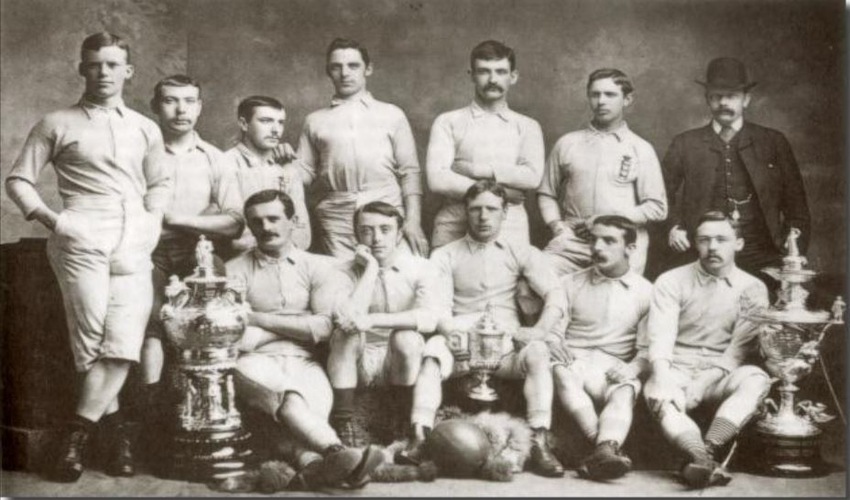
Sometimes new competitions come about after years of wrangling and negotiation, whilst others happen more naturally because teams just want to play against each other. In the case of the FA Cup it was created after a meeting took place in the offices of a newspaper of the time called The Sportsman, headed by a man named C. W. Alcock.
He proposed that there should be a ‘Challenge Cup’ established by the Football Association that all clubs that were part of the organisation should be allowed to take part in. The suggestion was carried by the other six members of the committee and plans began to be put in place to see the competition get started.
After much organisation and discussion of the format of the new tournament, the FA Cup’s inaugural matches began in November of 1871. Thirteen games were played over the following four months, culminating in a final that was hosted at Kennington Oval crick ground on the 16th of March 1872. Wolverhampton Wanderers took the title thanks to a 1-0 win over Royal Engineers, with the competition perhaps most notable for the fact that the leading Scottish club at the time, Queen’s Park, made it all the way to the semi-finals without actually having to play a game. That was due to a combination of byes through the rounds, an inability to decide on where to play the games and opposition teams pulling out.
Eventually they needed to pull out themselves after drawing with Wolves in the semi-final and being unable to afford the cost of travelling to London for a replay.
The Competition Develops
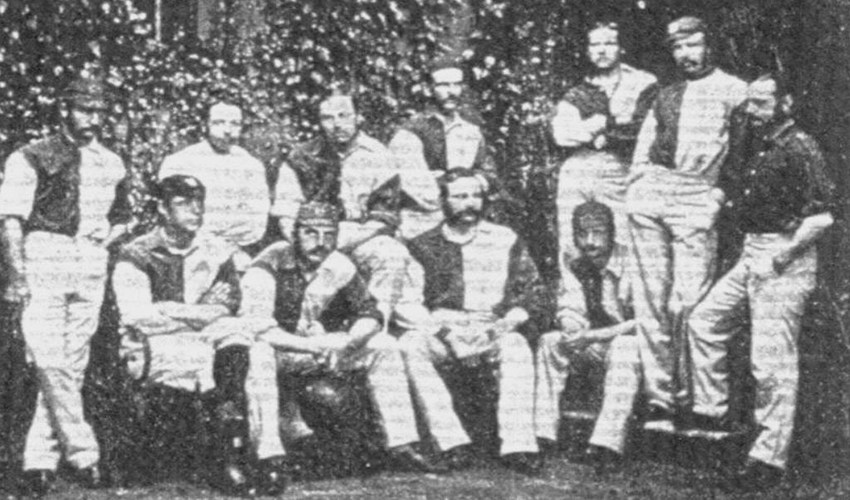
The 1872-1873 version of the FA Cup once again saw Wolves lift the title, this time beating Oxford University. A part of their success came down to the fact that they received an automatic bye to the final, with organisers feeling that the point of the ‘challenge’ part of the cup was that the best team had to earn the right to play against the cup holders.
The rules were promptly changed for the following campaign, with every team having to play from the start. It was the first season that didn’t feature Wolverhampton Wanderers in the final, with the two previous finalists of Royal Engineers and Oxford University facing each other, with the latter winning.
The 1875 final involved Royal Engineers once more, this time up against the Old Etonians after 29 teams had entered the competition. It ended 1-1 after extra-time and in those days there was no way to settle a match like that apart from a replay, so the two teams returned to Kennington Oval three days later and this time Royal Engineers managed to win the trophy courtesy of a 2-0 scoreline.
It was the following year that saw the modern version of the tournament begin to take shape, however, when qualifying rounds were introduced for the first time to try to whittle down the number of teams that entered the competition proper.
Non-League Sides Began To Have An Influence
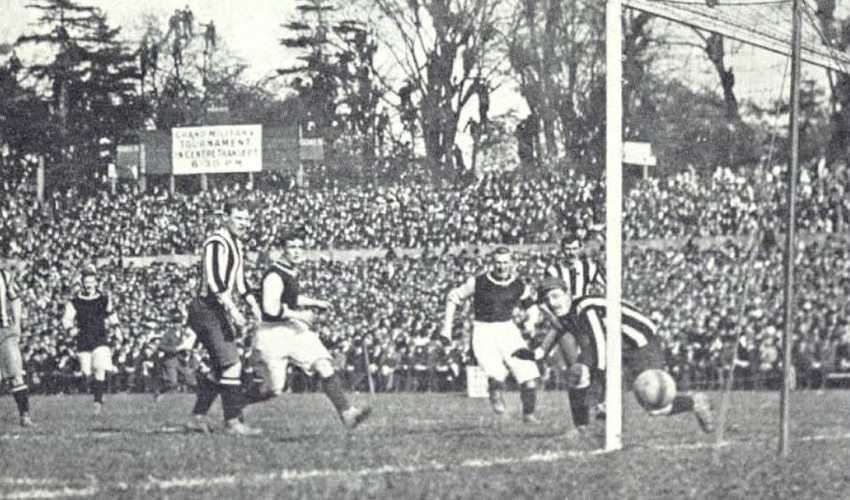
The idea of the ‘giant killing’ might seem like a modern phenomenon, whipped up by a tabloid press desperate to sell papers. That would be dismissive of the achievements of some of non-league sides that performed admirably during the competition’s more formative years, however. The first widely accepted giant killing came when Warwick County, a non-league side, went to Stoke City’s home ground and beat the First Division team 2-1 in October of 1888. That was the same year that the Football League was formed and only one non-league side has won the competition since then.
That non-league side was little-known club Tottenham Hotspur, who had been playing football since 1882 and were in the Southern League when they took part in the FA Cup in the 1900-1901 season. They made it through the the final to face Sheffield United, with the match taking place at Crystal Palace in front of more than 110,000 people. That was a record attendance for a football match at the time, showing not only the growth of the sport but also the increasing popularity of the competition. Those of you that enjoy nerdy facts will be interested to know that it was the first final to be filmed and also featured the first refereeing error to be shown as an error by the footage recorded.
The first match ended in a 2-2 draw, with one of Sheffield United’s goals being controversial on account of the fact that the ball didn’t cross the line but the goal was given anyway. The result was that a replay was needed when extra-time couldn’t find a winning goal, so the two teams travelled to Burnden Park in Bolton on the 27th of April. This time no amount of dodgy refereeing could stop Spurs from becoming the first and only non-league team to win the FA Cup, given that there’s not much arguing with a 3-1 scoreline.
The First World War Years
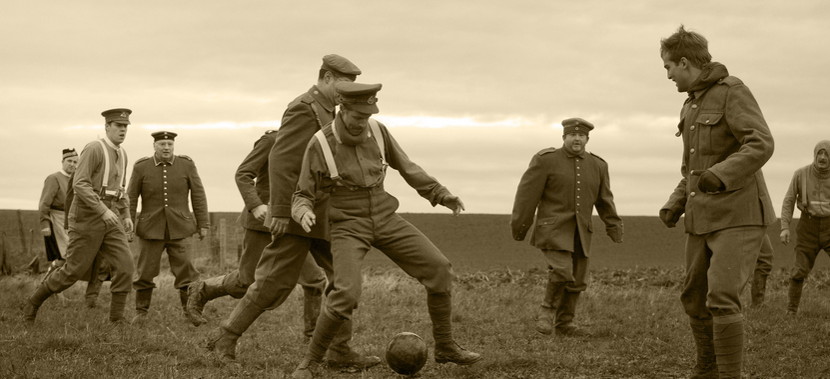
The outbreak of the First World War initially made no difference to the FA Cup. The 1914 edition took place under the ever-growing threat of conflict but a couple of months before war actually broke out, giving Burnley time to secure a 1-0 win over Liverpool at Crystal Palace.
The war was very much underway by the time the 1915 edition took place, however, and part of the result of that was the changing of the venue from Crystal Palace to Manchester’s Old Trafford.
Perhaps Sheffield United felt at home in a stadium not far from their city, or maybe Chelsea felt out of their depth having had to travel further than the Watford Gap. Either way, the northern team ran out 3-0 winners over their Southern rivals. The match was nicknamed ‘The Khaki Cup Final’ because so many of those in the crowd were wearing their uniforms.
The attendance was down on previous years, with fewer than 50,000 people making it to the home of Manchester United, as travel restrictions made it difficult for people to move around as freely. Regardless, it was the last match to take place before the suspension of competitive football in England.
The Final Moves To Wembley
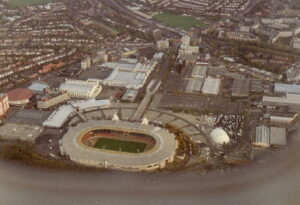 The FA Cup resumed in 1920, but it was what happened in 1923 that would become an important part of the competition’s future. That was the first time that the tournament’s final took place at what was known as the Empire Stadium but would later be called Wembley.
The FA Cup resumed in 1920, but it was what happened in 1923 that would become an important part of the competition’s future. That was the first time that the tournament’s final took place at what was known as the Empire Stadium but would later be called Wembley.
The final saw West Ham taking on Bolton Wanderers, but it also demonstrated that the FA Cup truly had found an audience; though the venue was meant for around 127,000 people, it’s believed that more than 300,000 poured through the doors and eventually ended up spilling out onto the pitch.
Mounted police required more than 45 minutes to restore order, stopping the game from getting started until everyone was back in the stands. Eventually it kicked off with King George V in the stands watching, meaning that he was there to see David Jack score after just two minutes.
Jack Smith then scored in the second-half to give the northern team the win before being presented with the trophy by the king. It is sometimes referred to as the White Horse Final and ended up being spoken about in the House of Commons. It was the inspiration behind safety standards being introduced for football matches after about 900 people needed to be treated for injuries.
More Developments & The Post-War Years
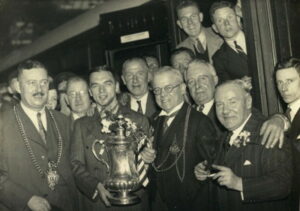 Ahead of the 1925-1926 version of the tournament it was decided that the teams in the top two divisions of English football should be given byes to the 3rd round of the tournament; a practice that has largely continued ever since.
Ahead of the 1925-1926 version of the tournament it was decided that the teams in the top two divisions of English football should be given byes to the 3rd round of the tournament; a practice that has largely continued ever since.
That year’s final was also the first to be played with changes to the offside rule in play. As the next decade progressed the threat of war once again began to surface and 1939 was the last time the FA Cup was to take place before football once again had to be suspended owing to conflict.
The resumption of the FA Cup for the 1945-1946 season also saw the introduction of a one-off rule: every round off the competition was to be played over two legs in order to allow clubs that were struggling financially to make money from ticket sales.
The aggregate score from both matches was taken in order to decide upon the winning team and if it was still a draw after that then a replay would take place at the home of the team that played the second-leg away. The only round that wasn’t played over two legs was the final, which Derby County won 4-1 after extra-time against Charlton Athletic.
The Modern FA Cup

It’s easy to forget now that football was still in its formative years even in the 20th century. An FA Cup match played in the 1960s, for example, took place when the competition was still less than 100 years old.
The rules of the game were still being developed in a big way, including the introduction of substitutes for the first time in the 1966-1967 season. The decision was taken because players had had to leave the field with broken bones in each of the finals in 1957, 1959, 1960, 1961 and in 1965, with no players allowed to replace them. Ironically, subs weren’t allowed in the final until the following year, however.
1970’s final between Chelsea and Leeds United had to be replayed, becoming the first year that that had happened since the showpiece event had been moved to Wembley.
Unfortunately the Horse Of The Year Show had been held at Wembley and left the pitch in such a state that the replay had to take place at Old Trafford. Fittingly the club that called that ground home, Manchester United, were involved in the 3rd place play-off with Watford; a play-off that only lasted four years before being abandoned.
Anniversaries And The Introduction Of The Penalty Shoot-Out
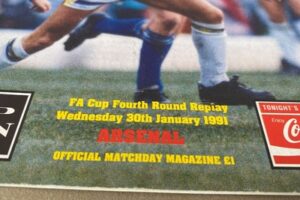 The FA Cup celebrated something of a centenary in 1972, though of course the fact that the competition had twice been suspended because of the two World Wars meant that it actually wasn’t the tournament’s 100th season. The following year was the 50th anniversary of Wembley being used as the venue for the final of competition, however, and the 100th final, not including replays, took place in when Tottenham Hotspur and Manchester City went up against each other.
The FA Cup celebrated something of a centenary in 1972, though of course the fact that the competition had twice been suspended because of the two World Wars meant that it actually wasn’t the tournament’s 100th season. The following year was the 50th anniversary of Wembley being used as the venue for the final of competition, however, and the 100th final, not including replays, took place in when Tottenham Hotspur and Manchester City went up against each other.
In something of a predictable outcome the match ended 1-1 after extra-time, requiring a replay. The previous replays had taken place elsewhere, but with this being a special year for the FA Cup and Wembley it took place at the same venue and Spurs won it 3-2.
To a modern football supporter the idea of no penalty shoot-outs might seem quite quaint, but that is also something of a modern invention when it comes to the FA Cup. It was brought in as a result of the clash between Arsenal and Leeds United in the 4th round of the competition in the 1990-1991 season.
The match had to be replayed three times to find a winner, leading to the Football Association’s decision that one replay ending in extra-time and penalties would be enough for the competition moving forward. Even one replay was seen as too many for some teams and the format would change once more later in the competition’s history. 1991 was also the first year that saw a semi-final take place at Wembley, when Arsenal and Spurs were drawn against each other and it seemed silly to send them to an neutral venue up north.
Further Developments And Wembley Gets A Revamp
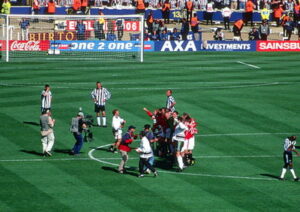 Despite the rules on replays changing for the competition proper, they remained in place during the qualifying phase of the tournament until the 1996-1997 season. 1993, meanwhile, because the first version of the competition in which both semi-finals were played at Wembley; something that is common place in the modern version of the tournament. That was also the same year when the FA Cup final itself was allowed to go to a replay, with Arsenal beating Sheffield Wednesday 2-1 in the replayed match. Arsenal paired their FA Cup win with victory in the League Cup, becoming the first club to win that particular Double.
Despite the rules on replays changing for the competition proper, they remained in place during the qualifying phase of the tournament until the 1996-1997 season. 1993, meanwhile, because the first version of the competition in which both semi-finals were played at Wembley; something that is common place in the modern version of the tournament. That was also the same year when the FA Cup final itself was allowed to go to a replay, with Arsenal beating Sheffield Wednesday 2-1 in the replayed match. Arsenal paired their FA Cup win with victory in the League Cup, becoming the first club to win that particular Double.
From the 1999-2000 season onwards it was decided that FA Cup semi-finals should be decided on the day, rather than being allowed to go to a replay. In spite of this clearing up of the schedule, Manchester United became the first team to willingly decide not to defend their FA Cup crown when they club chose to play in the FIFA Club World Championship in Brazil instead. They were replaced by Darlington after a draw of the twenty clubs that had failed to progress from round two was made. 2000 also witnessed the final final to take place at the old Wembley, which was scheduled to be knocked down and rebuilt over the following five years.
The result was that the FA Cup finals of 2001 though to 2006 were all played at the Millennium Stadium in Cardiff. Once again interesting info buffs will be keen to know that the first match in Wales saw Liverpool beat Arsenal 2-1 and the final match played in the Welsh stadium also saw the Merseyside club victorious over a London-based team, this time beating West Ham United on penalties. The final returned to Wembley in 2007 and, in another quirk of fate, Chelsea, who had won the last FA Cup at the old Wembley thanks to a 1-0 win over Aston Villa, also won the first FA Cup at the new Wembley with a 1-0 win over Manchester United.
The Competition In The 21st Century
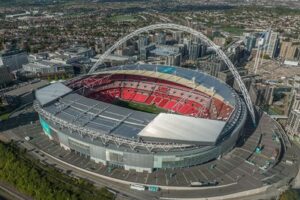
Whilst the FA Cup final was moved back to Wembley in 2007 the semi-finals continued to take place at neutral locations until the 2007-2008 season. At this point both semi-finals and the final began taking place at Wembley, with many feeling as though the FA were devaluing the competition with the decision. The argument of those that don’t like the Wembley semi-finals is that the final itself should be the showpiece event, with teams playing to get a day out at the home of English football for their fans and that by having the semi-finals there too it took the shine off the main event somewhat.
There was also an argument that the Football Association were doing it to make money to help pay off the cost of the stadium build, rather than for the good of the tournament. Regardless of the logic, the semi-finals and final have all been hosted at Wembley Stadium since 2008. One decision that the FA made that the majority of football supporters were easily able to get on board with was the abandonment of replays from the quarter-final stage onwards starting with the 2016-2017 version of the competition. Instead of draws being played at that stage matches that end in a draw are decided on the day thanks to extra-time and a penalty shoot-out if needed.
Many argued that this should be introduced for all stages of the competition, given the fixture backlog that is often caused by the need for replays. From 2018-2019 there were no replays in the fifth round either. In 2024-35 replays were stopped from the 1st round proper onwards, although they can still happen in the preliminary rounds.
FA Cup Format and Schedule
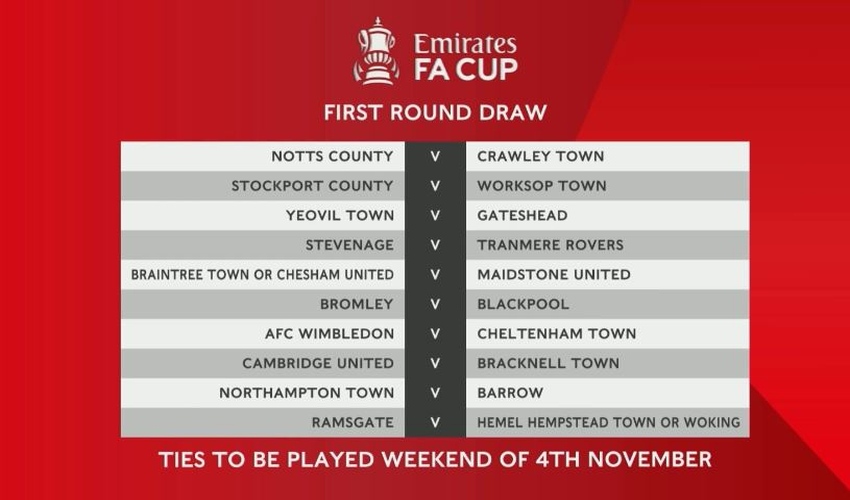
As mentioned elsewhere in the piece, any team within the top ten tiers of English football is eligible to play in the FA Cup. Obviously that makes the competition somewhat saturated with teams, so the Football Association puts forward several eligibility criteria to reduce the number of participants before a match is even played.
The clubs that make up the 92 teams in the top four divisions of English football are automatically allowed to take part in the tournament, whilst the non-league sides that make up the next six tiers can also take part in it provided they have taken part in any of the FA Trophy, the FA Vase of the FA Cup itself the previous season.
Teams must have a ground suitable to host FA Cup matches, though there’s some debate about what exactly classifies as a suitable ground. Any team that plays in the English league is eligible to take part in the FA Cup, so leading Welsh sides such as Cardiff City and Swansea City often do so.
It wasn’t unusual for leading clubs from the Scottish, Welsh and even Irish league to take part in the competition during its formative years, though nowadays only the Welsh clubs tend to enter. In 2011-2012 a record number of sides entered the tournament, 763, so it’s important to whittle them down before the competition proper even gets started.
The Qualifying Tournament
| Round | Clubs Entering | Month |
|---|---|---|
| Preliminary | Level 8 | August |
| First Round | Level 7 | September |
| Second Round | Level 6 | September |
| Third Round | No More | October |
| Fourth Round | Level 5 | October |
Before the FA Cup itself gets underway the competition sees a qualifying competition take place in order to reduce the number of teams taking part in it from approximately 368 to a more palatable number. The process begins in August when the teams from Levels 9 and 10 of English football compete in the Extra-Preliminary Round.
The table above shows how the early stage of the competition pans out from there.
FA Cup Proper
| Round | Month | Teams Remaining |
|---|---|---|
| 4 | January | 32 |
| 5 | February | 16 |
| Quarter-Finals | March | 8 |
| Semi-Finals | April | 4 |
| Final | May | 2 |
By the end of the qualification tournament there will be 32 teams ready to progress into the First Round proper. At this stage they will be joined by the 48 clubs that make up Leagues 1 and 2 of the Football League. That will give 80 teams playing 40 matches in total.
The 2nd round of the FA Cup sees no more teams entered but another set of fixtures taking place so that 20 teams are decided upon to move into the 3rd round proper, at which point the Championship and Premier League teams are entered into the draw. The table above shows how the competition pans out from there in terms of time-scale.
How The Draw Is Done

In the initial part of the qualifying tournament the teams are split into regions in order to reduce the amount of money that non-league sides will have to pay for travel and so on.
Once the competition proper gets underway, however, the draw is done completely at random, usually involving a former football doing the draw in tedious fashion live on TV. The balls are placed into a pot and removed at random, with the first team taken out playing and home and the second becoming the away side.
The random nature of the draw is what makes it so exciting and what throws up such intriguing fixtures. It is not unheard of for a top Premier League side to have to travel away to a League 1 or League 2 team’s ground, for example. It’s for that reason that the 3rd draw is usually one of the most popular, with the majority of people hoping for a tasty tie or two. Lower league sides drawn at home to big teams can often make a lot of money from gate receipts, keeping them out of financial trouble for the remainder of the season.
The draw is made regardless of whether or not the results from previous rounds have all been decided, which can often lead to the teams taking part in replays knowing who they’ll get in the next round, should they qualify, and whether the match will be played at home or away.
What The Winning Team Gets
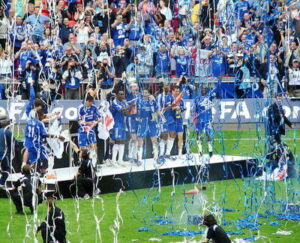 The team that wins the FA Cup gets more than just the prestige of lifting the trophy. As well as getting to keep the cup itself on loan from the FA until March of the following season, teams also get to take part in European competition, though it’s worth pointing out that things can be slightly complex on that front.
The team that wins the FA Cup gets more than just the prestige of lifting the trophy. As well as getting to keep the cup itself on loan from the FA until March of the following season, teams also get to take part in European competition, though it’s worth pointing out that things can be slightly complex on that front.
The FA Cup winner automatically qualifies for the Europa League, but the issue is complicated if they have already qualified for either that competition or the Champions League via their Premier League form. In that instance it used to be the case that the losing finalist would take the place in Europe but nowadays it instead goes to the next-based placed team in the top-flight that hasn’t qualified for either tournament.
The final thing that the winning team gets is permission to play in the Community Shield, a friendly game that takes place the weekend before the Premier League season gets underway. The match is usually between the Premier League winners and the FA Cup winners, but if that happens to be the same team then the side that finished 2nd in the Premier League takes part instead.
The Trophy
![]() There are three separate parts to the FA Cup trophy. Which was originally just 18 inches tall when it was made by Matin,Hall& Co. for the original final. It was stolen in 1895 so another was created, only for Manchester United to realise in 1909 that there was nothing to stop them from creating their own copy of it because the FA didn’t own the copyright. They changed that for the 1911 season onwards, getting Fattorini and Sons to create one for them. That was replaced in 1992 by an exact replica in order to ensure that the original wasn’t damaged.
There are three separate parts to the FA Cup trophy. Which was originally just 18 inches tall when it was made by Matin,Hall& Co. for the original final. It was stolen in 1895 so another was created, only for Manchester United to realise in 1909 that there was nothing to stop them from creating their own copy of it because the FA didn’t own the copyright. They changed that for the 1911 season onwards, getting Fattorini and Sons to create one for them. That was replaced in 1992 by an exact replica in order to ensure that the original wasn’t damaged.
The three part of the trophy are the lid, the base and the cup itself. The name of the winning team is engraved onto a silver band that runs around the base of the trophy, with the engraving being done during the final itself. The engraver normally has just five minutes to do their work, often etching the winner’s name in place if it looks as though the match is going a particular way. This has led to numerous embarrassing incidents over the years! Since 1901 the trophy has also been adorned with ribbons in the colours of the winning team.
The trophy is typically presented to the winning team by a member of the royal family immediately after the match, though the using team collects their losers medals first. The current trophy is 61.5 centimetres tall and weighs 6.3 kilograms, being made from sterling 925 silver by Thomas Lyte in 2014.
Wembley Stadium
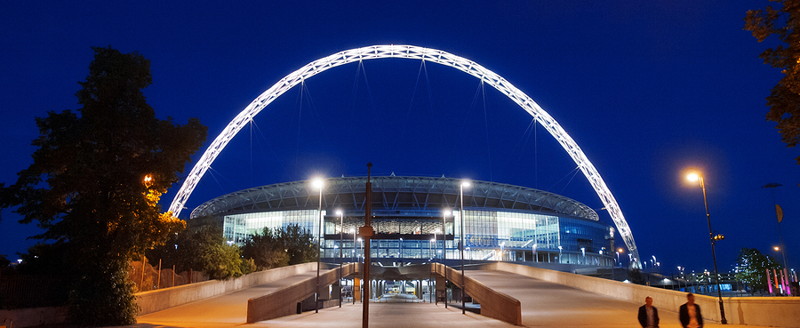
As you’ll have read elsewhere, the FA Cup final takes place at Wembley Stadium and has done ever since the new version of the group opened in 2007. Owned by the Football Association, Wembley Stadium is the largest in England in terms of capacity, having the ability to seat 90,000 people for football matches.
It was designed by Populous and Foster and Partners, boasting an Arch that reaches 440 feet into the air and is one of the most noteworthy landmarks in that area of London. It’s not just there for the visual, however, as it also supports more than 75% of the load of the entire roof. Many people belief that Wembley Stadium boasts a retractable roof that can close completely, but that’s not true. In actuality there are two sections of roof that can move a small amount from the east and west sides of the ground.
Wembley Stadium is the home of the FA Cup final and semi-finals, but it’s also the location for the League Cup final as well as the play-offs for the Football League. The Community Shield takes place at the venue too and it’s been used to host more than one Champions League final since it re-opened. In the 2018-2019 season Tottenham Hotspur played their home games in the ground whilst White Hart Lane was being redeveloped.
Stats:
- Opened: 2007
- Capacity: 90,000
- Cost: £789 millioon
- Surface: Desso GrassMaster
- Pitch Size: 105 metres x 68 metres
FA Cup Trivia And Stats
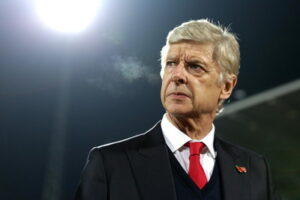 The only thing left to do is to have a look at the trivia and stats that surround the FA Cup, adding colour to the picture that we’ve already painted about the competition.
The only thing left to do is to have a look at the trivia and stats that surround the FA Cup, adding colour to the picture that we’ve already painted about the competition.
Here’s some of the most interesting things we could find out:
- Portsmouth have held the trophy for the longest period, winning it in 1939 and not having to relinquish it until 1946 because of the suspension of football owing to the Second World War
- Arsenal have won the FA Cup more than any other team, 14 times
- Wanderers and Blackburn Rovers both won the trophy three times consecutively, which is a record
- Chelsea have the opposite and unwanted record having lost three finals in a row in 2020 (Arsenal), 2021 (Leicester) and 2022 (Liverpool)
- Arsenal and Man United have the honour of appearing in more finals than any other teams, 21 times
- Leicester City are what you might term the ‘unluckiest’ team, having made the final more times without winning it than any other team
- Wanderers, on the other hand, appeared in five finals between 1872 and 1878 and never lost
- Bolton Wanderers and West Ham United share the dubious distinction of having scored the most goals in a final without winning: 3 apiece
- Manchester United hold the equally dubious honour of having lost more finals than any other team at 9
- Ashley Cole is the tournament’s most successful player thanks to his 7 wins
- Arsene Wenger won the tournament 7 times as a manager, which is a record for a manager
- Ian Rush scored more goals in FA Cup finals than any other player, netting 5 times for Liverpool across three finals
- The biggest win in any round of the FA Cup came in 1887 when Preston North End beat Hyde 26-0 in the 1st round
- There were 161 league places between Tottenham and Marine when they played in the 3rd round in 2021, the biggest ever gap between two teams
- Between the 3rd round proper in 1999 and the 4th round proper replay in 2013 Chelsea went 29 games without losing except for by penalty shoot-out, winning the trophy 3 times along the way